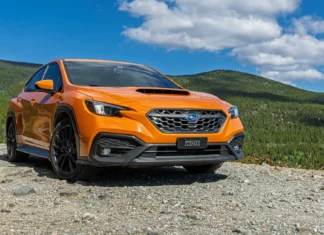
Want an Aston Martin Valhalla? It will set you back a cool $800,000.
We’ve known Aston Martin‘s Nordic-named supercar was coming for awhile. However, while this looks no less epic than the 2019 concept, the actual production car has arrived with some crucial changes. And by “some”, I mean pretty much everything behind this car — from some of the look to the powertrain and even the price.

In place of Aston’s own hybrid V-6, the new Valhalla will instead carry a gas-battery electric powertrain backed by an AMG-sourced 4.0-liter twin-turbo V-8. The engine will send its power to the rear wheels through an 8-speed dual-clutch transmission. Two electric motors — one on the front axle and the other sandwiched with the transmission — will add up to 200 horsepower, bringing the total output to 937 horsepower. Aston Martin estimates the Valhalla will finish the 0-62 mph in 2.5 seconds on its way to a 217 mph top speed. Thanks to that sort of power and aerodynamics providing 600 kilograms of downforce, the automaker says the Valhalla can manage a sub-6:30 lap time on the Nürburgring Nordschleife. Currently, the best production car time rests with the Porsche 911 GT2 RS, which did the 12.9-mile circuit in 6:43.3.
One area that engine won’t be chipping in is when the Aston Martin Valhalla needs to back up, as it has no reverse gear. Instead, the car uses its electric motors for that task, shaving some weight off the car by simplifying the transmission. As a plug-in hybrid, Aston’s latest supercar can also run in pure EV mode, like the McLaren Artura or Ferrari SF90 Stradale. Not for very long, though, as the WLTP-tested range is just 9 miles, though it can run up to 80 mph on electricity alone. The car also supports DC fast charging up to 150 kW.
Actually, you could argue the Valhalla’s a bit of a bargain.
With F1-style pushrod front suspension, Multimatic Adaptive Spool Valve (ASV) shocks and a carbon fiber tub, you know the Aston Martin Valhalla is going to be an expensive proposition. Still, it may not be quite as expensive as we’d been led to believe. Original reports pegged the supercar at $1.3 million, so anything short of that seven-figure tag makes it a relative bargain. Carbon ceramic brakes are also standard, while you also get a full active safety suite including automatic emergency braking, blind spot monitoring and adaptive cruise control.
The first deliveries are set for the second half of 2023, so it’s still awhile yet before those well heeled enough to buy one will actually see their Valhalla in person. Pricing has not been finalized so that $800,000 mark could shift a bit, but even then — it’s always fun to have another supercar in the game.



























